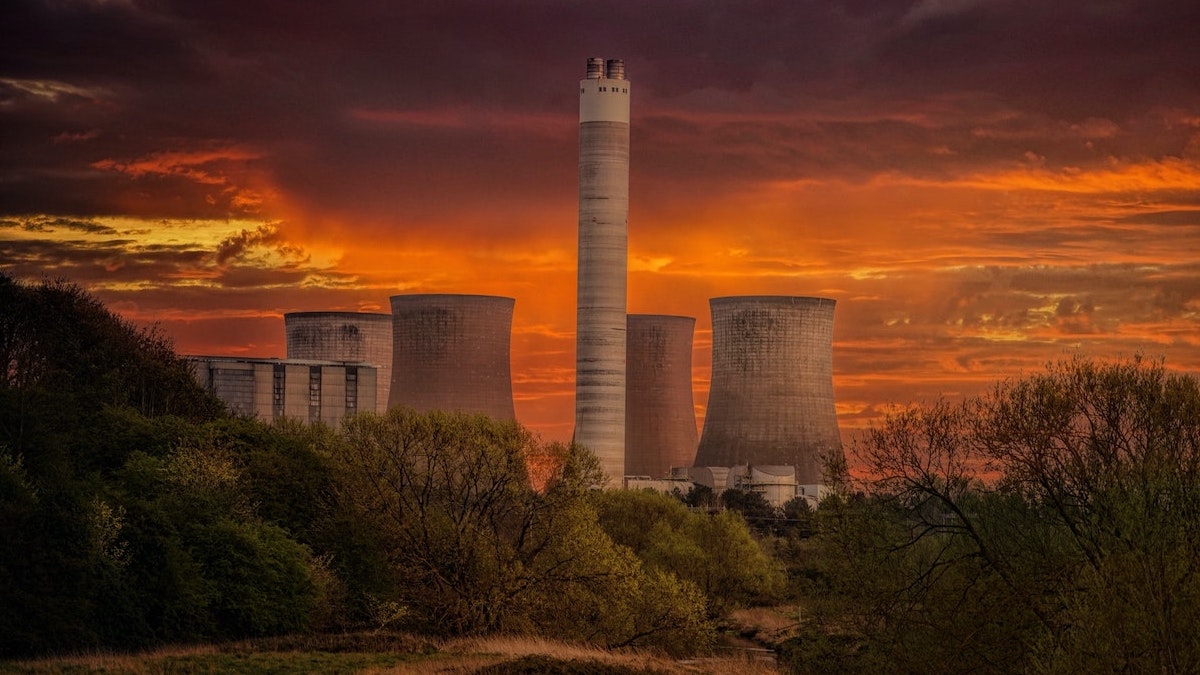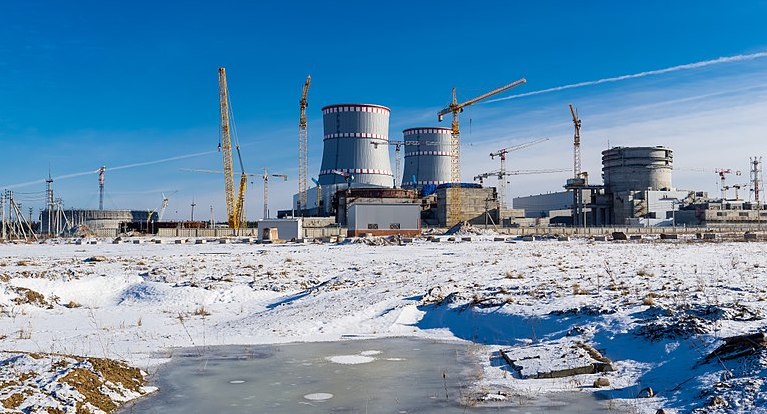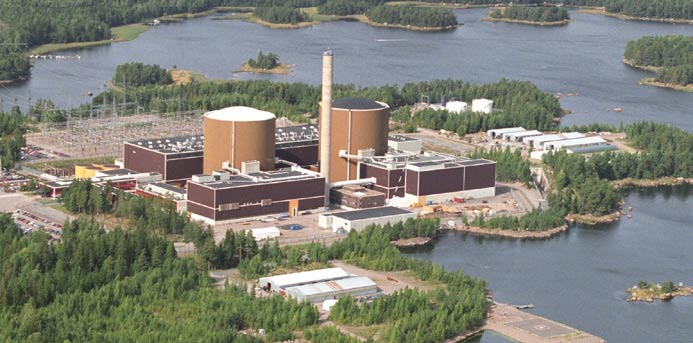“Europe must stop its cooperation with Rosatom – stop participating in joint projects, including building nuclear power plants. Stop buying nuclear fuel from Rosatom,” – Co-chairman of Ecodefense, Vladimir Slivyak
Ecodefense, Russia May 29, 2022 | Europe needs a plan in place for cutting ties with Russia’s nuclear giant Rosatom, says 2021 Right Livelihood Award winner and co-chairman of Ecodefense Vladimir Slivyak | beyondnuclearinternational.org

With the European Union tightening its sanctions against Russia, banning Russian imports of oil, gas, and coal has emerged as one powerful tool to starve the Kremlin’s war machine of funding it needs to continue its brutal aggression in Ukraine.
But one other major source of Russia’s revenue in Europe has largely remained unnoticed: Russia’s supplies of nuclear fuel and services to European nuclear power plants.
Seeking to close this gap in Europe’s concerted action against the war in Ukraine and to provide a comprehensive picture of the union’s reliance on Russian nuclear technology, environmentalists Patricia Lorenz, of Friends of the Earth Europe, and Vladimir Slivyak, a 2021 Right Livelihood Award laureate and co-chairman of the Russian environmental group Ecodefense, jointly presented over Zoom Russian Grip on EU Nuclear Power – an overview of Russia’s businesses and supply chains serving the European nuclear market.
The report comes on the heels of the European Parliament’s resolution demanding a full embargo on Russian nuclear fuel as well as oil, gas, and coal, and as Moscow’s war reveals the terrifyingly irresponsible actions at the hands of Russian troops at or near the sites of Ukraine’s nuclear power plants.
 President of Russia, Vladimir Putin, meeting with Rosatom CEO, Alexey Likhachev. Rosatom in its current form is a state corporation created by Putin. (Photo: Presidential Executive Office of Russia/Wikimedia Commons)Through its uranium-producing mines, the fuel manufacturing subsidiary TVEL, and a number of other enterprises – including the German firm NUKEM and the Czech-based Škoda JS – as well as ties with France’s Framatome, Russia’s nuclear giant Rosatom earns billions supplying uranium, fuel assemblies, and maintenance, storage and transport services to nuclear companies and power plants in European countries. This includes fuel deliveries to Soviet-built nuclear power plants in Ukraine.
President of Russia, Vladimir Putin, meeting with Rosatom CEO, Alexey Likhachev. Rosatom in its current form is a state corporation created by Putin. (Photo: Presidential Executive Office of Russia/Wikimedia Commons)Through its uranium-producing mines, the fuel manufacturing subsidiary TVEL, and a number of other enterprises – including the German firm NUKEM and the Czech-based Škoda JS – as well as ties with France’s Framatome, Russia’s nuclear giant Rosatom earns billions supplying uranium, fuel assemblies, and maintenance, storage and transport services to nuclear companies and power plants in European countries. This includes fuel deliveries to Soviet-built nuclear power plants in Ukraine.
According to a late April report carried by Rosatom’s corporate outlet Strana Rosatom, the corporation’s total foreign revenue in 2021 rose 20.3% year on year, reaching $8.9 bn. In the first three months of 2022, Rosatom’s foreign earnings grew by 13%. TVEL’s revenue from nuclear fuel exports stood at $0.7 bn in 2020, said the corporation’s annual report for that year.
Yet Rosatom, created in its current form as a state corporation by Vladimir Putin in 2007, is not an independent party in Russia’s relations with Europe and the rest of the world. A descendant of the government entity that created and oversaw the Soviet nuclear arms program before expanding nuclear energy uses to civilian power infrastructure, Rosatom has purview of both the country’s commercial nuclear industry and its vast arsenal of nuclear munitions. The threat of using nuclear weapons has accompanied Russia’s aggression from the start of the invasion of Ukraine on February 24.
Rosatom is financed to a significant extent by the state and uses state guarantees and state funding to offer cheap loans to prospective reactor buyers abroad. Negotiations on future nuclear power plant projects often involve high-level discussions between the Russian president and his counterparts during head-of-state visits. The corporation has thus long been an instrument used by Moscow to gain and maintain political influence: Once a nuclear power plant is built with Russian money, Rosatom’s foreign customers are tied to Russia with loan repayments and are reliant for decades to come on its fuel supplies for continued energy security of their countries.
Certain construction plans – such as the failed project in Kaliningrad Region or the two-unit plant under construction in Belarus – were meant to export power to the neighboring Baltic states, and Finland still buys part of the energy produced by Leningrad Nuclear Power Plant operating near St. Petersburg, Slivyak pointed out during the presentation of Russian Grip on EU Nuclear Power over Zoom.
 Finland still buys part of the energy produced by Leningrad Nuclear Power Plant operating near St. Petersburg, (Photo: Ler from RU SPb/Wikimedia Commons)Nor can or should Rosatom be treated as an uninvolved bystander in a war its state is waging against the very country it sends nuclear fuel to. Representatives of Rosatom arrived at the site of Zaporizhzhia Nuclear Power plant – a six-unit plant which, like Chornobyl shortly before that, fell to the Russian forces in the first two weeks of the war – a few days after the Russian military took control on March 4, said a summary report issued by International Atomic Energy Agency (IAEA) Director General Rafael Mariano Grossi. The report, released on April 28, said that “about ten Rosatom staff members are still there.”
Finland still buys part of the energy produced by Leningrad Nuclear Power Plant operating near St. Petersburg, (Photo: Ler from RU SPb/Wikimedia Commons)Nor can or should Rosatom be treated as an uninvolved bystander in a war its state is waging against the very country it sends nuclear fuel to. Representatives of Rosatom arrived at the site of Zaporizhzhia Nuclear Power plant – a six-unit plant which, like Chornobyl shortly before that, fell to the Russian forces in the first two weeks of the war – a few days after the Russian military took control on March 4, said a summary report issued by International Atomic Energy Agency (IAEA) Director General Rafael Mariano Grossi. The report, released on April 28, said that “about ten Rosatom staff members are still there.”
An IAEA press release of April 29, citing information provided by Ukraine, said Rosatom’s specialists “demanded daily reports from plant management about ‘confidential issues’ on the functioning” of the plant and that, according to Ukraine’s information, personnel were “working under unbelievable pressure.” “The morale and the emotional state” of staff at Zaporizhzhia were “very low,” an earlier report by Ukraine to the IAEA also said.
The press release quotes Director General Grossi as saying that the situation at Zaporizhzhia “continues to be challenging and requires continued attention owing to the presence of Russian forces and Rosatom personnel at the site while operational management remains with Ukrainian plant operators.”
These developments followed numerous media reports showing or describing Russian troops shelling plant buildings at Zaporizhzhia, holding captive the staff of Chornobyl, and both sites at certain points facing risks stemming from loss of external power supply (disconnection from the grid at Chornobyl and power line damage at Zaporizhzhia), which is critical to the safety of their infrastructure.
In mid-March, a coalition of Ukrainian environmental NGOs in an open letter said such actions amounted to “nuclear terrorism” and called on the Western community to stop cooperation with Rosatom and its subsidiaries, sanction the company and its leadership, and ban imports of Russian nuclear fuel.
This is a view shared by Ecodefense’s Slivyak.
“Europe must stop its cooperation with Rosatom – stop participating in joint projects, including building nuclear power plants. Stop buying nuclear fuel from Rosatom,” he said.
Cutting all ties with Rosatom involves finding alternative suppliers of uranium, services, and – most crucially – nuclear fuel for the Soviet-built VVER-440s and VVER-1000s operating in Bulgaria, the Czech Republic, Finland, Hungary, Slovakia, and Ukraine. The latter, given the many problems with attempts to switch to fuel rods produced by the U.S. company Westinghouse, is of special concern – particularly so with regard to the VVER-440s, with specialized assembly designs developed by Rosatom for individual units, Lorenz and Slivyak warned. Fourteen such reactors operate in EU states, and two in Ukraine.
 Cutting all ties with Rosatom involves finding alternative suppliers of uranium, services, and – most crucially – nuclear fuel for the Soviet-built VVER-440s and VVER-1000s operating in Bulgaria, the Czech Republic, Finland (Loviisa pictured), Hungary, Slovakia, and Ukraine. (Photo: Finnish radiation safety authority report/Wikimedia Commons)Most of these units, however, have already reached the end of their original lifetime, Lorenz, who authored the report, said in the introduction, adding that “a well-prepared phaseout of nuclear power would be the economically and politically most sustainable answer.”
Cutting all ties with Rosatom involves finding alternative suppliers of uranium, services, and – most crucially – nuclear fuel for the Soviet-built VVER-440s and VVER-1000s operating in Bulgaria, the Czech Republic, Finland (Loviisa pictured), Hungary, Slovakia, and Ukraine. (Photo: Finnish radiation safety authority report/Wikimedia Commons)Most of these units, however, have already reached the end of their original lifetime, Lorenz, who authored the report, said in the introduction, adding that “a well-prepared phaseout of nuclear power would be the economically and politically most sustainable answer.”
Slivyak confirmed this as he spoke over Zoom, saying a swift shutdown of 14 reactors using Rosatom fuel is a difficult measure to implement – but not an impossible one.
He cited as an example the immediate closure of RBMK reactors, of the design built at Chornobyl, following the devastating catastrophe at the plant in 1986. And 54 reactors, as was pointed out during the Zoom discussion, were taken offline in Japan in the wake of the Fukushima disaster in 2011. Of those, as of early April 2022, only ten have been restarted.
Slivyak also highlighted a stark lack of a discussion of a possible plan of action in case Russia itself decided to cut Europe off its uranium or fuel assembly deliveries – much like it did at the end of April with gas supplies to Bulgaria and Poland following refusal to give in to Moscow’s demand for payments in roubles.
“A plan to replace nuclear energy with energy from other sources must be created, and the [Russia-dependent] operating reactors must be shut down,” Slivyak said.
Republished from the Ecodefense website. Patricia Lorenz is an anti-nuclear expert with Friends of the Earth, Europe and the author of Russian Grip on EU Nuclear Power. Vladimir Slivyak is co-chair of Russian anti-nuclear NGO, Eco-defense. Their new report is called “Shunning Rosatom”.
Headline photo: Johannes Plenio/pexels.com
ORIGINAL ARTICLE
The views expressed in articles by outside contributors and published on the Nuclear Watch New Mexico website, are their own, and do not necessarily reflect the views or positions of NukeWatch. However, we try to offer a broad variety of viewpoints and perspectives as part of our goals to “promote safety and environmental protection at regional nuclear facilities; mission diversification away from nuclear weapons programs; greater accountability and cleanup in the nation-wide nuclear weapons complex; and consistent U.S. leadership toward a world free of nuclear weapons.”
